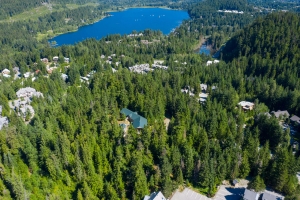RE/MAX’s 2021 Recreational Property Report Launched
Find out how you can navigate this seller’s market to get a vacation home in Whistler.
Whistler real estate is experiencing sellers’ market conditions due to low inventory and high demand. Certain types of properties are selling quickly in multiple offers and over the list price, with regional in-province buyers driving most of the activity. The majority of this region’s buyers have always come from within British Columbia, with around 10% coming from the U.S. and up to 10% coming from overseas. However, since January 2021 more than 93% of buyers were from British Columbia.
The Whistler real estate market is driven by buyers who are interested in a lifestyle change and desire more outdoor space. Home offices, walkability, being slope-side, storage for recreational equipment and proximity to outdoor amenities are some of the most sought-after amenities in Whistler.
Due to lifestyle changes the traditional vacation home in Whistler has now become the permanent residence for many buyers.
As the pandemic continues, buyers interested in recreational properties in this region may start to become more tolerant to high prices, while others are experiencing multiple-offer fatigue.
Canadian Cabin & Cottage Trends
The red-hot demand seen across the Whistler real estate market is a common thread across Canada, as interest and activity in suburban and rural property markets continues to grow. Despite rising demand, 57 per cent of Canadian recreational markets still have at least one property type with average prices below $500,000, according to the 2021 RE/MAX Recreational Property Report.
This bodes well for the 78 per cent of Canadians who plan to purchase a property in the next year and consider themselves to be “recreational buyers,” according to a Leger survey that was conducted on behalf of RE/MAX. More than half of those who plan to purchase a property in the next year (59 per cent) are first-time recreational property buyers. Of those planning to purchase a recreational property, 21 per cent are looking to recreational markets after being priced out of an urban centre. However, low borrowing rates are working in their favour, with 22 per cent saying the lower rates have increased their ability to buy.
 The survey also found that 11 per cent of Canadians were searching for a recreational property prior to the start of the pandemic and are still searching, and 15 per cent of Canadians who were not searching for a recreational property prior to the pandemic are now looking.
The survey also found that 11 per cent of Canadians were searching for a recreational property prior to the start of the pandemic and are still searching, and 15 per cent of Canadians who were not searching for a recreational property prior to the pandemic are now looking.
Shifting home-buying trends, as prompted by the pandemic, are exacerbating inventory challenges in a majority of recreational markets across Canada. The growing demand in these regions is also putting upward pressure on prices which is impacting affordability in many recreational markets, which RE/MAX brokers anticipate will be a long-term trend.
“There’s intense competition among buyers in Canada’s recreational property markets and inventory is stretched thin,” says Christopher Alexander, Chief Strategy Officer and Executive Vice President, RE/MAX of Ontario-Atlantic Canada. “But Canadians recognize that recreational properties remain an affordable option in such a turbulent market. There are still many recreational markets across Canada that are deemed affordable, despite the growing demand and rising prices.”.
Affordability Outlook
According to RE/MAX brokers and agents, sellers’ market-like conditions are anticipated to persist for the remainder of the year in 97 per cent of regions examined in the report. These conditions are typically accompanied by rising prices, which has been a trend in 2020 that is expected to continue through 2021. RE/MAX brokers report that 57 per cent of Canada’s recreational markets include at least one property type priced in the $200,000 – <$500,000 range. This is down from 87 per cent in 2019. The most affordable recreational regions for waterfront properties across Canada include Thunder Bay ($425,805), Charlottetown ($334,447) and Interlake Region of Manitoba ($363,833), while Okanagan ($2,430,434), Barrie-Innisfil ($1,841,217) and Niagara region ($1,546,561) are the most expensive recreational property markets for waterfront properties.
“In today’s real estate landscape, with increased demand and ongoing supply issues putting pressure on prices and sparking bidding wars, industry professionalism is of utmost importance,” says Elton Ash, Regional Executive Vice President, RE/MAX of Western Canada. “Recreational markets across Canada are feeling the pressure, and without a solution to address supply issues, we are running out of affordable options for Canadians.”.
Unsurprisingly, affordability remains the top buying criteria for 41 per cent of Canadians who are in the market for a recreational property, followed by proximity to water or waterfront, amenities and good Wi-Fi. With demand for recreational properties anticipated to remain strong for the remainder of the year, lifestyle factors typically found in city homes, such as restaurants, Internet connection and office space are expected to remain a priority among buyers.
—
Blog written & provided by: Communications Coordinator, Kayley Jackson, RE/MAX of Western Canada. May 18, 2021




Share this entry